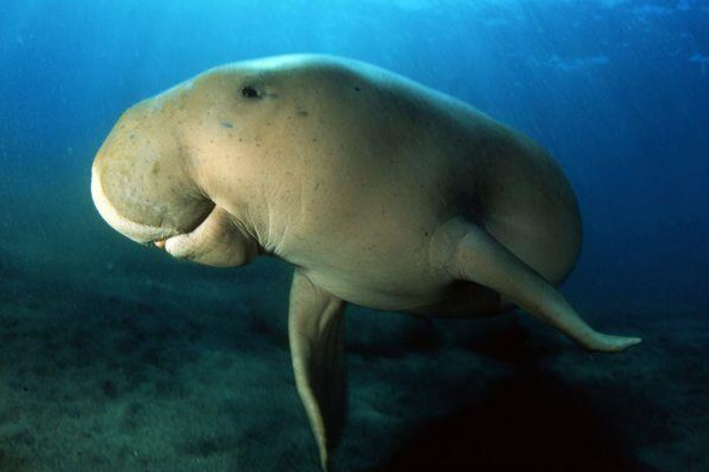Text by Henrylito D. Tacio
Photo credit: DENR
In the Philippines, there are seven wetlands of international importance; these are Agusan Marsh Wildlife Sanctuary, Las Pinas Paranaque Critical Habitat and Ecotourism Area, Naujan Lake National Park, Negros Occidental Coastal Wetlands Conservation Area, Olango Island Wildlife Sanctuary, Puerto Princesa Subterranean River National Park, and Tubbataha Reefs Natural Park.
The figure may go up to eight as the government is nominating the Sibugay Coastal Wetlands to the Ramsar List of Wetlands of International Importance as part of conserving its rich biodiversity and the cultural heritage of Zamboanga Sibugay’s Subanens and other ethnic tribes.
The inclusion of Sibugay Coastal Wetlands will “protect its rich wildlife which is home to 53 waterbird species – 37 migratory waterbirds and 11 threatened migratory waterbirds,” said a press statement issued by the Department of Environment and Natural Resources (DENR).
Right now, DENR is completing in the second quarter of 2022 the project “Establishing Knowledge on the International Importance of Sibugay Wetlands: A Means to Enhance Wise Use of the Proposed Ramsar Site.”
Sibugay Wetlands, which has a total area of 187,000 hectares – has been extensively planted with mangroves totaling 5,155 hectares. It has mudflats (bay mud) spanning 1,607 hectares.
“The mangrove forest plays a major role in the productivity of the wetland, especially for fisheries as well as roosting sites for the largest flying fox population,” said DENR wildlife experts. “Sibugay Wetlands serves as a staging, roosting, foraging and breeding grounds for various waterbirds including migratory species.”
As part of the conservation plan, DENR will empower the local communities on the sustainable use of the wetland and its resources, thereby giving them livelihood to keep them away from destroying such environmental wonders.
“The bay supports fishing and other marine related livelihood which serves as the main source of subsistence for most of the coastal barangays,” the environment department said.
Paul A. Keddy, author of Wetland Ecology: Principles and Conservation, defines a wetland as “an ecosystem that arises when inundation by water produces soil dominated by anaerobic processes which, in turn, forces the biota, particularly rooted plants, to adapt to flooding.”


A patch of land that develops pools of water after a rain storm would not be considered a “wetland,” even though the land is wet. Specifically, wetlands are characterized as having a water table that stands at or near the land surface for a long period each year to support aquatic plants.
Under the Ramsar international wetland conservation treaty, wetlands are defined as follows:
Article 1.1: “… wetlands are areas of marsh, fen, peatland or water, whether natural or artificial, permanent or temporary, with water that is static or flowing, fresh, brackish or salt, including areas of marine water the depth of which at low tide does not exceed six meters.”
Article 2.2: “(Wetlands) may incorporate riparian and coastal zones adjacent to the wetlands, and islands or bodies of marine water deeper than six meters at low tide lying within the wetlands.”
In simpler terms, wetlands occur where water meets land. They include mangroves, peatlands and marshes, rivers and lakes, deltas, floodplains, flooded forests, rice fields, and even coral reefs.
The Ramsar Convention is an intergovernmental treaty that provides the framework for national action and international cooperation for the conservation and wise of wetlands and their resources.
The DENR’s Biodiversity Management Bureau (BMB) states the first basic function of wetlands is that they ensure freshwater for all people. “Wetlands provide us with drinking water,” it points out.
Wetlands also filter harmful waste from water. “Eighty percent of wastewater is discharged into the natural environment without any form of treatment,” says BMB. “The abundant plant life in wetlands absorbs waste, which helps purify water.”
Unknown to many, wetlands are nature’s shock absorbers. “Wetlands are a natural buffer during extreme weather. They store heavy rainfall during storms, which reduces flooding and delays the onset of droughts,” BMB states.
The wetlands are very important when it comes to biodiversity. “Wetlands are home to more than 100,000 freshwater species,” BMB says. “They are essential for many amphibians, reptiles and migratory birds.”
Wetlands also guarantee food supply. “Wetlands provide important food products like fish and rice,” BMB says. Fish and rice are the country’s staple food.
Wetlands may also be important sources of renewable energy. Its role when it comes to the problem of climate change also cannot be ignored as they store carbon. “Peatlands alone hold 30% of all carbon stored on land,” experts claim. “This is twice the amount stored in the world’s forests, providing resilience against climate change.”
Despite their myriad uses, wetlands are not given much prominence. They are neglected and not given importance. “Encroachment on, or loss of, wetlands can cause serious environmental damage to the ecosystem, so they should be restored and rehabilitated when possible,” the DENR suggested.


